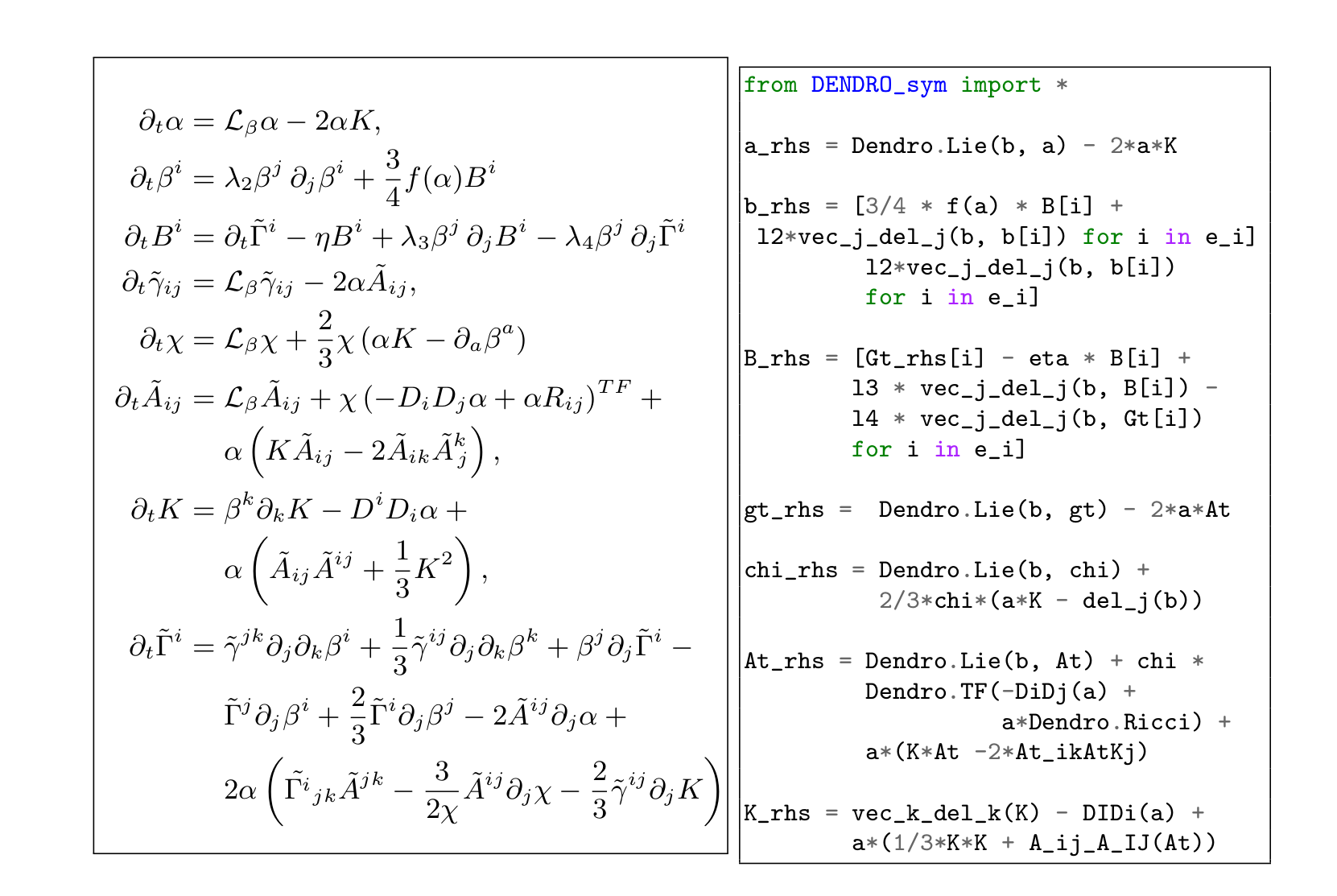Equal mass ratio binary compact merger, slice over the octree of BSSN variable chi variable
Equal mass ratio binary compact merger, slice over the octree of BSSN variable chi variable with underlying WAMR grid
Real part of psi4 scalar which will be used for gravitational wave analysis
Imaginary part of psi4 scalar which will be used for gravitational wave analysis
 (left) A example of the adaptive mesh created by Dendro for the binary black-hole system. (right) the hierarchical wavelet grids generated for the binary black hole system.
(left) A example of the adaptive mesh created by Dendro for the binary black-hole system. (right) the hierarchical wavelet grids generated for the binary black hole system.
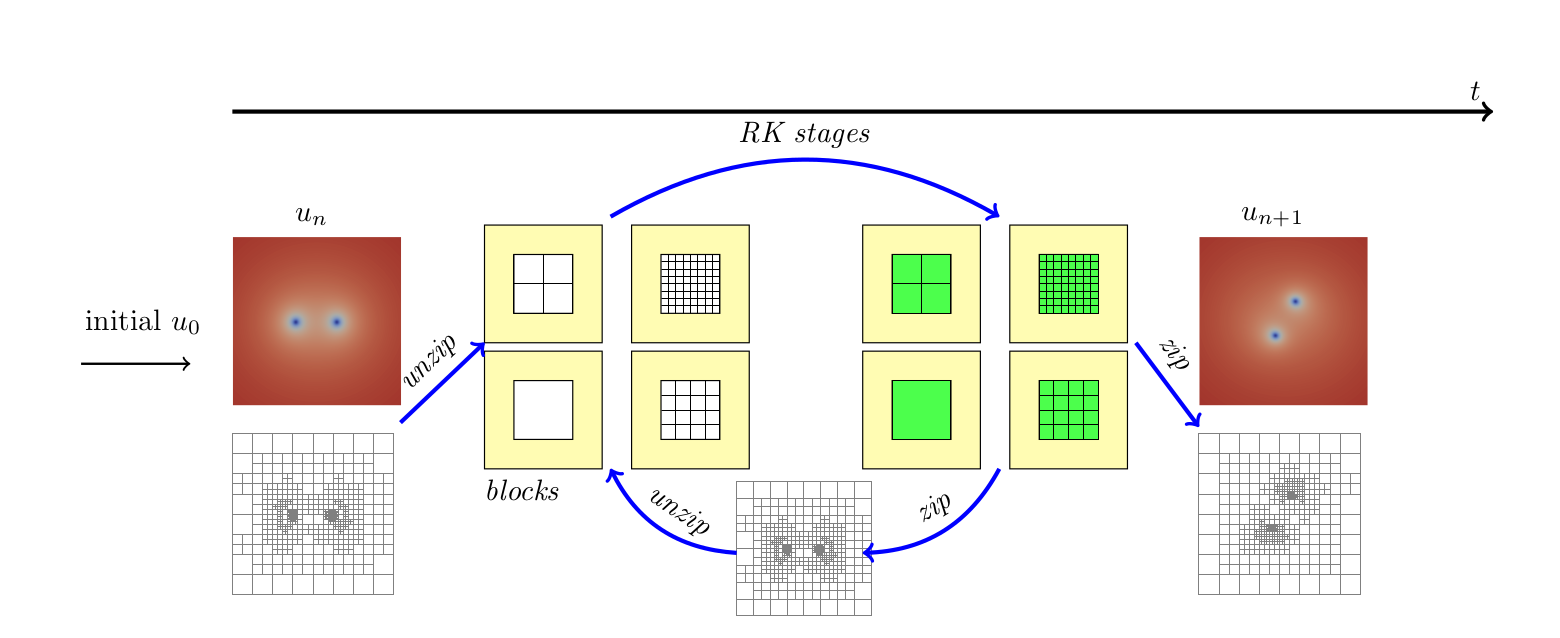 This figure illustrates the calculation of a single Runge-Kutta (RK) time step, computing the solution at the advanced time, u n+1 , from data at the previous time step,
This figure illustrates the calculation of a single Runge-Kutta (RK) time step, computing the solution at the advanced time, u n+1 , from data at the previous time step,
In the left which shows the BSSN formulation of Einstien equation while in the right figure shows how the BSSN formulation written using our symbolic code generation framework.
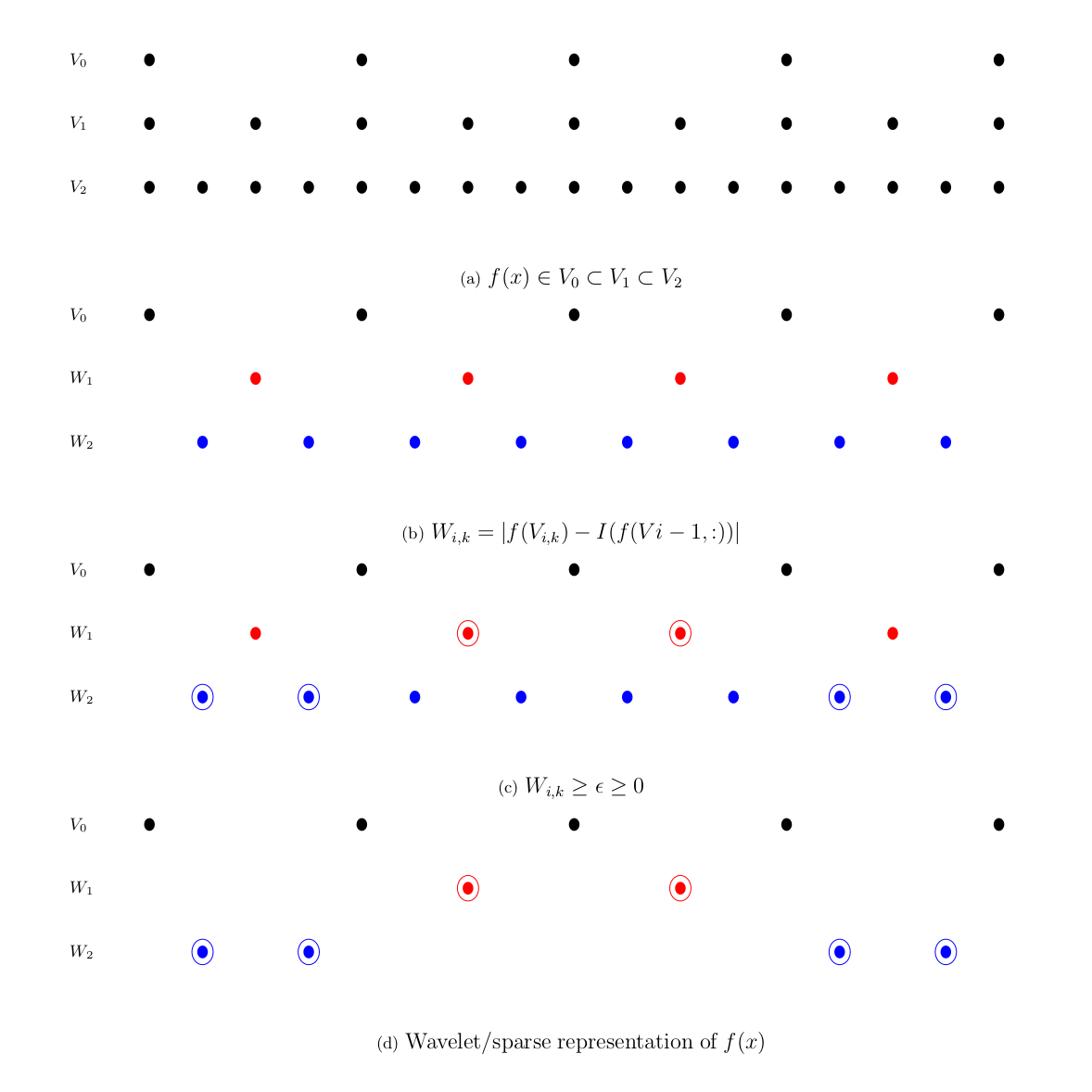
For a given function
-
Dendro-GR portable and highly-scalable algorithm and framework that targets problems in the astrophysics and numerical relativity communities. This framework combines Dendro octree with Wavelet Adaptive Multiresolution (WAMR) and a physics module to solve the Einstein equations of general relativity in BSSN formulation.
-
Wavelet adaptive multiresolution is used to provide local, fine-grain adaptivity, based on the fast wavelet transform of interpolating wavelets.
-
The goal of this work is to perform advanced, massively parallel numerical simulations of Intermediate Mass Ratio Inspirals (IMRIs) of binary black holes with mass ratios on the order of 100:1. These studies will be used to generate waveforms for use in LIGO data analysis and to calibrate semi-analytical approximate methods.
-
This advanced framework is designed to easily accommodate many existing algorithms in astrophysics for %compressible plasma dynamics and radiation hydrodynamics.
-
We have designed novel algorithms to enable efficient simulations for such experiments and demonstrate excellent weak scalability up to 131K cores on ORNL's Titan.
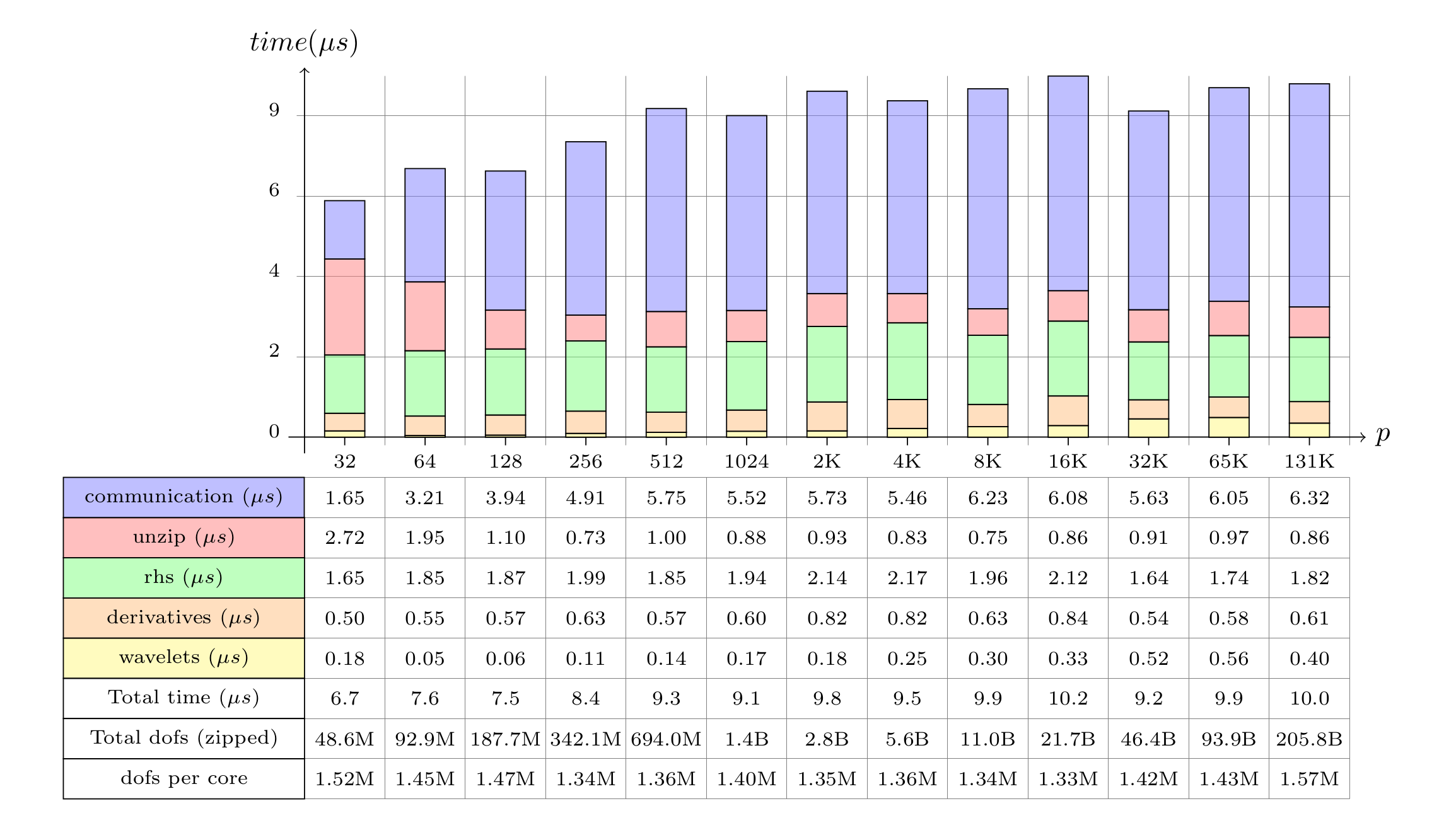 Weak scaling results in ORNL's Titan for
Weak scaling results in ORNL's Titan for
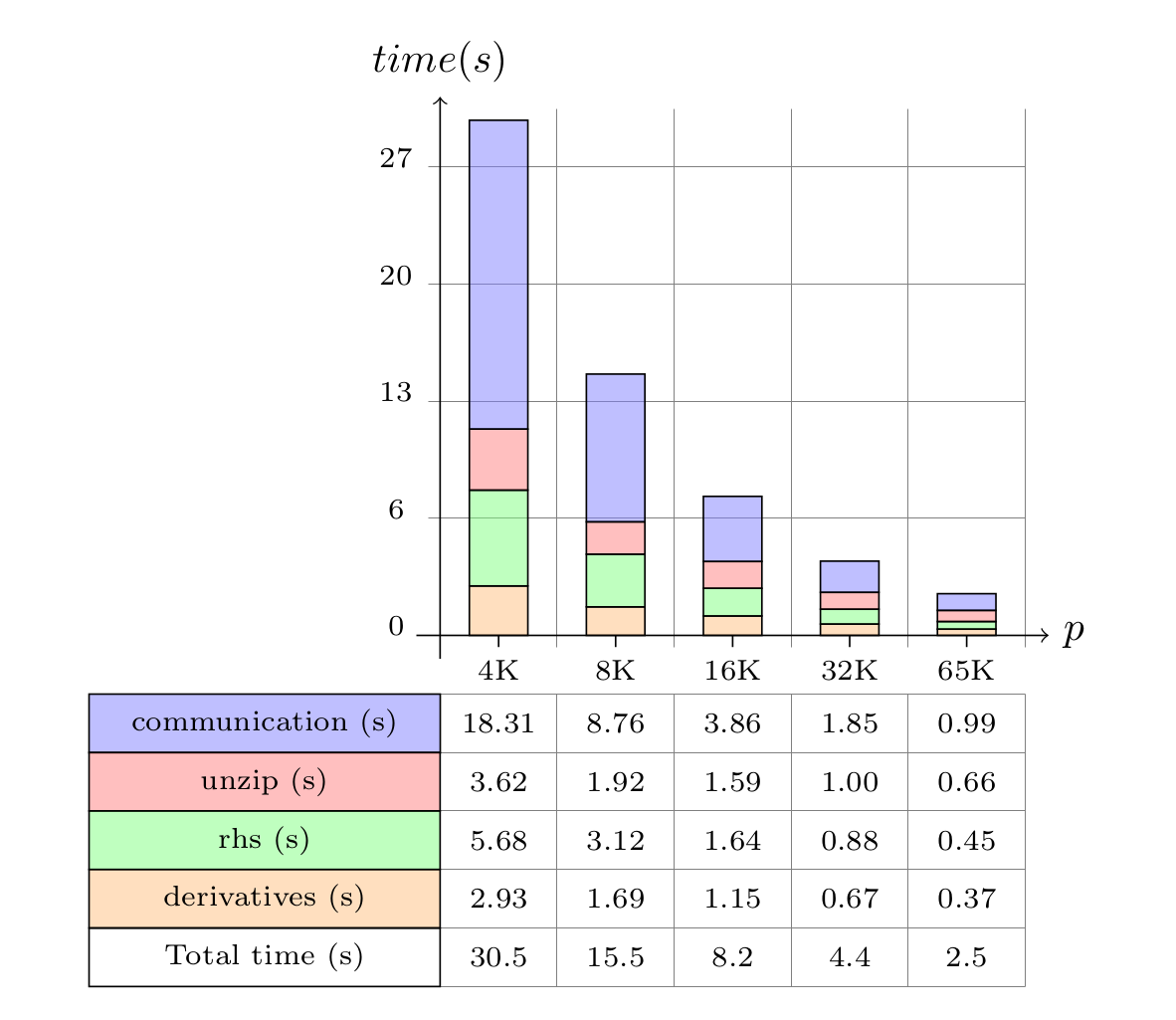 Strong scaling results in ORNL's Titan for a single RK step (averaged over 10 steps) with derivative computation (\texttt{deriv}), right hand side( {\texttt rhs}) computation, \texttt{unzip} cost and communication cost (\texttt{comm}) for a fixed problem size of
Strong scaling results in ORNL's Titan for a single RK step (averaged over 10 steps) with derivative computation (\texttt{deriv}), right hand side( {\texttt rhs}) computation, \texttt{unzip} cost and communication cost (\texttt{comm}) for a fixed problem size of
Dendro-GR Team
- Milinda Fernando (School of Computing, University of Utah)
- Hari Sundar (School of Computing, University of Utah)
- David Neilsen (Department of Physics and Astronomy, Brigham Young University)
- Hyun Lim (Department of Physics and Astronomy, Brigham Young University)
- Eric Hirschmann (Department of Physics and Astronomy, Brigham Young University)
